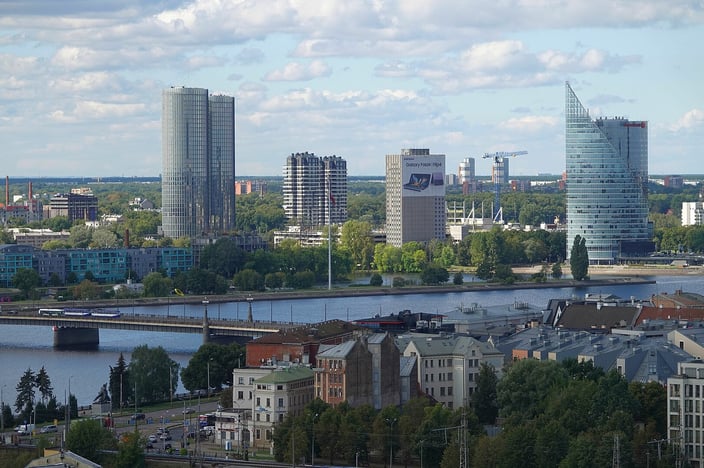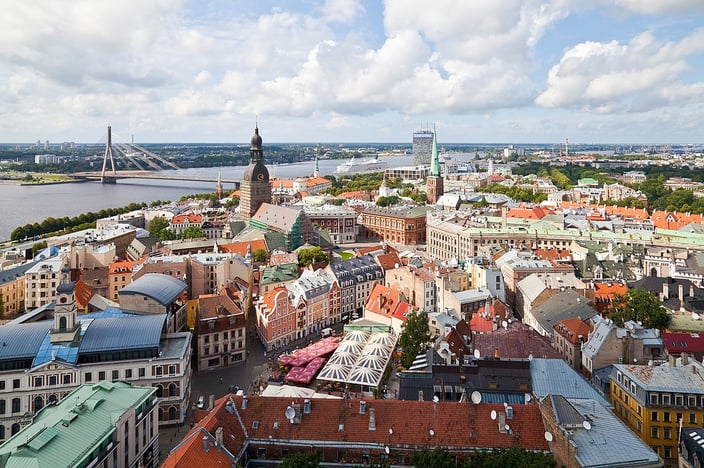A Journey Through the History of Riga
Unveiling the timeless charm; explore the captivating history of the capital of Latvia from its medieval beginnings to its vibrant present-day allure.
Nestled along the banks of the Daugava River lies a city whose history sings melodies of resilience, diversity, and cultural richness. Riga, the capital of Latvia, stands as a testament to the passage of time and the enduring spirit of its people.
From its humble beginnings as a small fishing village to its status as a bustling metropolis, Riga's journey through the ages is a captivating tale of conquests, trade, and artistic innovation.
The story of Riga dates back over eight centuries when it was founded in 1201 by Bishop Albert, a German missionary seeking to spread Christianity to the Baltic region. The city's strategic location at the crossroads of trade routes soon turned it into a flourishing center of commerce, attracting merchants from across Europe.
However, Riga's history is also marked by periods of foreign rule and conflict. In the 16th century, the city fell under the control of the Polish-Lithuanian Commonwealth before coming under Swedish rule in the 17th century. The Swedish era left its mark on Riga's architecture, contributing to the city's eclectic blend of styles.
Yet, perhaps the most transformative period in Riga's history came with the rise of the Russian Empire in the 18th century. Under Russian rule, Riga experienced a period of rapid growth and modernization, with the construction of elegant boulevards, palaces, and parks.
The city's skyline was forever altered with the addition of stunning Art Nouveau buildings, showcasing the creativity and innovation of the era.
By the 13th century, Riga had joined the Hanseatic League, a powerful confederation of merchant guilds that dominated trade in the Baltic Sea region, further enhancing its economic significance.
Throughout the medieval period, Riga's prosperity was reflected in its architecture, with the construction of majestic cathedrals, merchant houses, and defensive walls. The iconic Riga Cathedral, with its distinctive twin towers, stands as a symbol of the city's religious and cultural heritage.
Meanwhile, the cobblestone streets of the Old Town transport visitors back in time, offering a glimpse into the daily life of medieval Riga.
As Riga looks towards the future, it remains deeply rooted in its past, honoring the legacy of its ancestors while embracing the opportunities of the present. From its medieval origins to its modern-day vibrancy, the history of Riga is a testament to the enduring spirit of its people and the timeless allure of this enchanting Baltic gem.
The 20th century brought both triumph and tragedy to Riga. Following the end of World War I, Latvia declared its independence, and Riga became the capital of the newly established republic. This period saw a flourishing of Latvian culture, literature, and arts, cementing Riga's reputation as a vibrant cultural hub.
However, the euphoria of independence was short-lived, as Riga, along with the rest of Latvia, was occupied by the Soviet Union during World War II.
The subsequent decades under Soviet rule brought immense challenges, including mass deportations, suppression of cultural expression, and economic hardship. Yet, even in the face of adversity, the spirit of the Latvian people remained unbroken.
The fall of the Soviet Union in 1991 heralded a new chapter in Riga's history, as Latvia once again regained its independence. Freed from the shackles of communist rule, Riga embraced democracy and embarked on a journey of transformation and renewal. The city's historic center was designated a UNESCO World Heritage Site, ensuring the preservation of its architectural treasures for future generations.
Today, Riga stands as a vibrant and dynamic European capital, blending its rich history with modern amenities and attractions. Visitors can wander through the charming streets of the Old Town, sample traditional Latvian cuisine in cozy cafes, or explore the city's thriving arts and music scene.
Riga's reputation as a cultural hotspot continues to grow, with festivals, exhibitions, and performances attracting visitors from around the world.


Written by Josep O'Callaghan
Founder of ILoveRiga.com project. Currently working as a bus driver, previously selling office furniture and shelving systems for half my life. At first interested in 3D CAD computer design, but later, since 2010, also in web editing and blogging, always testing some different web editors. I speak catalan, spanish, english and romanian. I play bass guitar!












